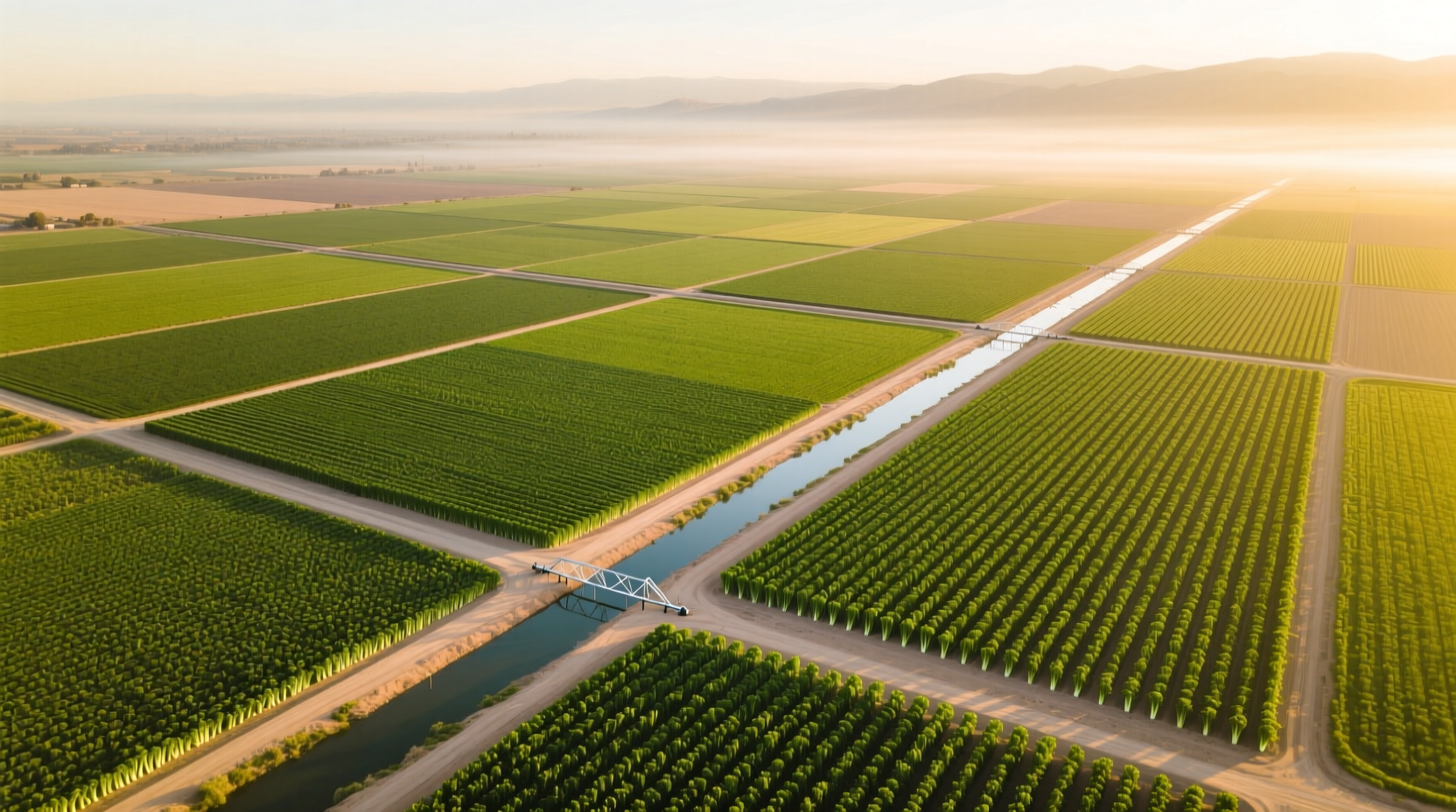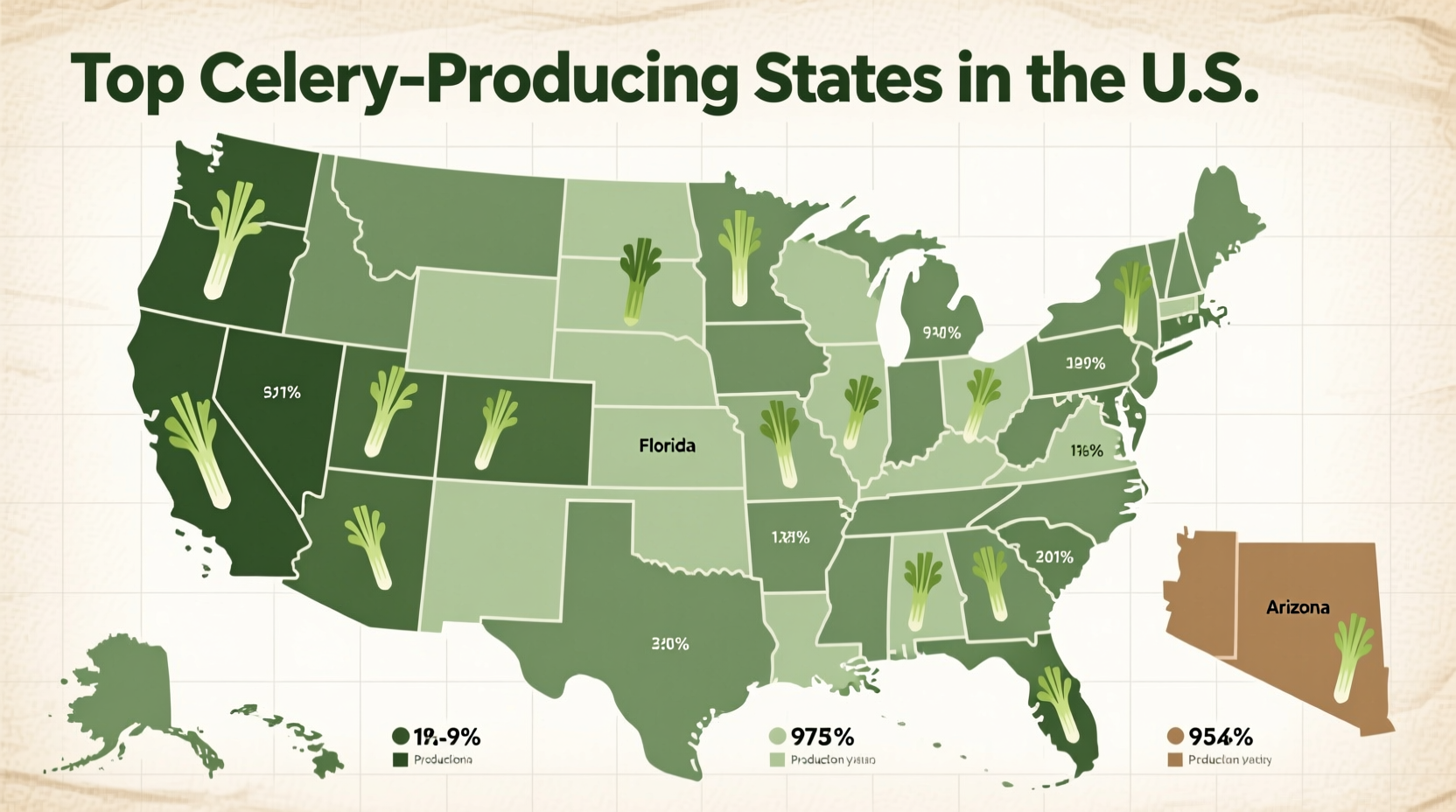If you've ever wondered where that crisp stalk on your plate originated, you're not alone. Understanding celery production regions helps consumers make informed choices about freshness, seasonality, and sustainability. This guide delivers verified agricultural data about US celery production, so you can understand exactly where your celery comes from and why certain regions dominate this essential crop's cultivation.
US Celery Production: The Complete Picture
When examining celery production across America, one fact stands out immediately: California's dominance in the industry is unparalleled. According to the latest USDA National Agricultural Statistics Service (NASS) reports, California consistently accounts for 85-90% of the nation's commercial celery production. This concentration isn't accidental—it's the result of ideal growing conditions, established infrastructure, and decades of agricultural expertise.
Top Celery Producing States Ranked
While California leads by a significant margin, several other states contribute to America's celery supply. The following table presents the most current production data from the USDA's 2023 Census of Agriculture:
| State | Percentage of US Production | Primary Growing Regions | Annual Production (Crate Equivalents) |
|---|---|---|---|
| California | 87% | Imperial Valley, Ventura County, Santa Maria Valley | 650,000-700,000 |
| Michigan | 6% | Oceana County, Muskegon County | 45,000-50,000 |
| Florida | 4% | St. Johns County, Volusia County | 30,000-35,000 |
| Texas | 1.5% | Hidalgo County | 11,000-13,000 |
| Washington | 1% | Skagit County | 7,500-8,500 |
Why California Dominates Celery Production
Several key factors explain California's overwhelming leadership in celery cultivation:
- Climate consistency - Celery requires cool temperatures (60-75°F) and high humidity to prevent stringiness and bitterness. California's coastal regions provide near-perfect conditions year-round.
- Advanced irrigation systems - As a water-intensive crop requiring consistent moisture, celery benefits from California's sophisticated agricultural water management.
- Soil composition - The alluvial soils in the Imperial Valley and coastal regions contain the ideal balance of organic matter and drainage celery needs.
- Established infrastructure - Decades of specialization have created efficient harvesting, processing, and distribution networks.

Seasonal Production Patterns Across Key Regions
Celery production follows distinct seasonal patterns depending on the region, affecting availability and quality throughout the year:
- California - Grown year-round with peak production from November through April. The Imperial Valley produces during winter months, while coastal regions supply summer harvests.
- Michigan - Primarily a summer crop (June-September), with harvest beginning in late June and continuing through September.
- Florida - Winter production (December-April), serving as an important off-season supplier when northern regions cannot grow celery.
Historical Shift in US Celery Production
The concentration of celery production in California represents a significant shift from historical patterns. This timeline shows how production regions have evolved:
- 1950s - Celery grown in numerous states including New York, Ohio, and Massachusetts, with California accounting for only 40% of production
- 1970s - California's share increases to 65% as agricultural technology advances and eastern growing regions face urbanization pressures
- 1990s - California's dominance solidifies at 80% as integrated pest management and irrigation technologies improve
- 2020s - California consistently produces 85-90% of US celery, with Michigan and Florida maintaining smaller but stable production levels
Practical Implications for Consumers
Understanding where celery comes from directly impacts your shopping decisions:
- Seasonal availability - During summer months (June-September), look for Michigan-grown celery which typically offers superior crispness during this period
- Winter quality - From November through April, California's Imperial Valley produces the highest quality celery with optimal crunch and flavor
- Regional variations - California celery tends to be slightly sweeter, while Michigan celery often has a more robust flavor profile
- Sustainability considerations - During winter months, locally grown celery in eastern states is extremely limited, making California celery the most practical choice despite transportation considerations
Future Trends in US Celery Production
Several factors may influence future celery production patterns:
- Water conservation initiatives in California may lead to modest production shifts to other regions
- Advancements in controlled environment agriculture could enable more localized production
- Consumer demand for year-round availability continues to support California's dominant position
- Climate change impacts may gradually alter optimal growing regions over the coming decades
Frequently Asked Questions
Which specific regions in California produce the most celery?
The Imperial Valley accounts for approximately 60% of California's celery production, primarily during winter months (November-April). Coastal regions including Ventura County and the Santa Maria Valley produce the remaining 40%, with harvests occurring from May through October. These regions benefit from California's Mediterranean climate, which provides the cool temperatures and consistent moisture celery requires.
Why doesn't celery grow well in most eastern US states?
Celery requires consistently cool temperatures (60-75°F) and high humidity to prevent stringiness and bitterness. Eastern US states typically experience more temperature fluctuations, higher summer heat, and greater humidity variations that stress celery plants. Additionally, eastern soils often have different drainage characteristics and higher disease pressure from fungal pathogens that affect celery quality. These factors make commercial production less economically viable compared to California's ideal growing conditions.
How does celery production impact local economies in growing regions?
In California's Imperial Valley, celery production supports approximately 15,000 seasonal jobs and generates over $300 million annually for the local economy. Michigan's celery industry contributes roughly $40 million to the state's agricultural economy and supports specialized equipment manufacturing and processing facilities in Oceana County. These economic impacts extend beyond direct farming to include transportation, packaging, and distribution sectors that rely on consistent celery production.
Is there a noticeable difference in quality between celery from different production regions?
Yes, regional differences affect celery quality. California celery typically has a slightly sweeter flavor profile and more consistent crispness due to controlled irrigation and ideal growing temperatures. Michigan celery often has a more robust, earthy flavor and slightly thicker stalks, reflecting the region's fertile muck soils. Florida celery tends to be more delicate with thinner stalks, adapted to the region's warmer winter growing conditions. These variations become most apparent when comparing regionally grown celery during their respective peak seasons.











 浙公网安备
33010002000092号
浙公网安备
33010002000092号 浙B2-20120091-4
浙B2-20120091-4